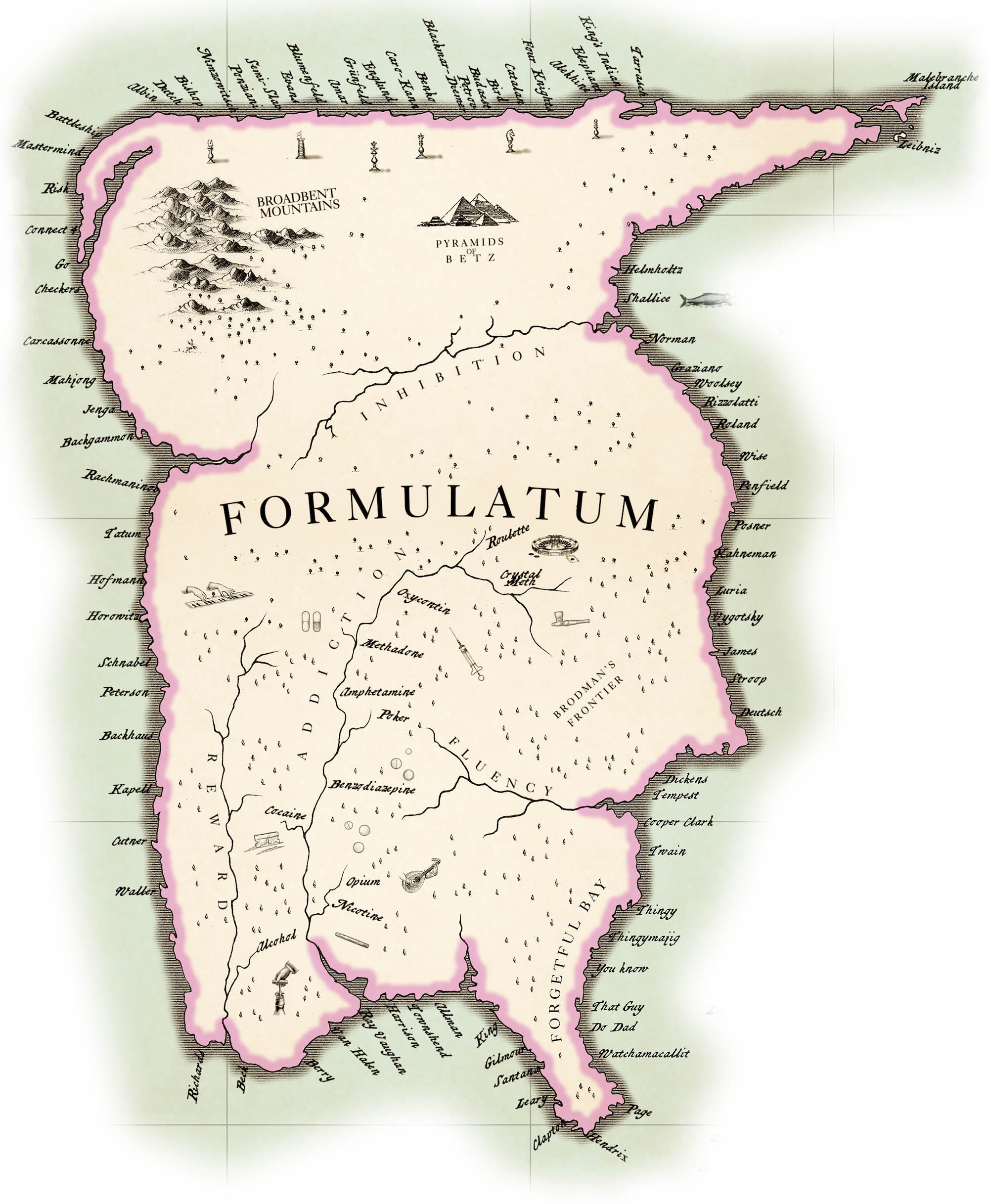Click on the map to learn more
Formulatum represents the Premotor Cortex which has a diverse range of functions. It's involved in planning and goal driven behaviour, fine motor control and is implicated in some aspects of addiction.
Cognitive Scientists
This part of the brain controls planning and goal driven behaviour, with scientists like Tim Shallice and Dan Norman hypothesising about the relationship between desires, goals and executive function.
This area was found to contain Mirror Neurons by Giocomo Rizzolatti. These neurons respond when we see others performing particular physical actions and are considered to be the root of empathy.
Forgetful Bay
"It's on the tip of my tongue...you know...that thing..."
When the coordination between an idea and actually producing the correct word breaks down.
Rock Guitarists
As a society we reward certain displays of fine motor control much more highly than others. A great example is the rock guitarist, a skilled guitarist is greeted with acclaim and glory.
The sweatshop worker who sewed the seams of your jeans is displaying a similar level of dexterity, yet receives no such plaudits.
Pianists
Playing the piano takes years of practice. Training ones fingers to execute the precise timing and strength of all ten fingers at once is rightly taken as a sign of virtuosity. Rachmaninoff famously had a huge hand span, and composed and performed works which were physiologically impossible for normal-handed humans to play.
River of Addiction
In some ways, addiction can be considered as a failure of executive function. Drugs that have pleasurable effects on the psyche are inherently 'rewarding', in the psychological sense, it is a failure to 'inhibit' the desire for pleasure that leads to addiction.
When you reach for that cigarette or glass of wine, it's due to activity here.
Fluency
Damage to this part of the brain can affect fluency, leading to faltering speech and stuttering. Fluency tends to be highly prized as a sign of intelligence and wit, here I've brought together the great public speakers of the 19th Century, Charles Dickens and Mark Twain with poets John Cooper Clarke and Kate Tempest.
Pyramids of Betz
Betz Cells are giant neurons, the largest in the brain, with connections which reach down the spinal cord to the muscles.
Broadbent Mountains
Donald Broadbent was the psychologist responsible for the influential filter model of attention, which attempts to explain how people can respond to two stimuli at once.
Games of Strategy
Play is found across the animal kingdom, and is considered to be evolutionarily useful to learn to parameters of adulthood in non-life-threatening behaviour. However, the playing of strategy games is uniquely human - the higher order symbolic manipulations required, both physically and mentally, indicate a form of mental agility that seems absent elsewhere in nature.
Chess Gambits
What better illustration of planning and goal driven behaviour than the game of chess?

Malebranche Island
Nicholas Malebranche the 17th Century philosopher, was one of the first to ruminate on the relationship between the ideas of man and the power of God - if man is made by God, how can he be imperfect?
He also had a way with a snazzy book title: "Concerning the Search after Truth. In which is treated the nature of the human mind and the use that must be made of it to avoid error in the sciences." is the name of one of his most notable works.
Leibniz
The philosopher Gottfried Leibniz is sometimes described as an "underappreciated pioneer of psychology", and was one of the first thinkers to write about attention.
